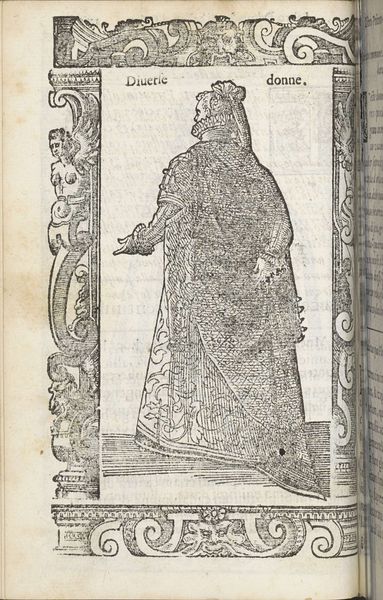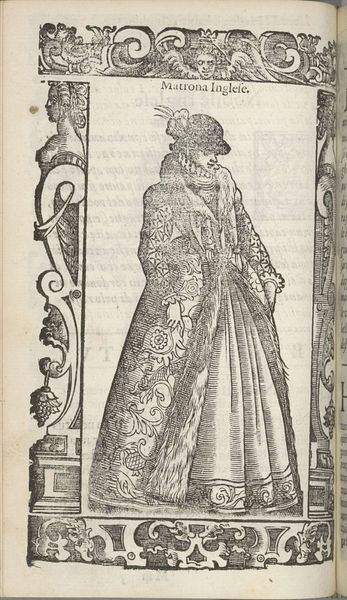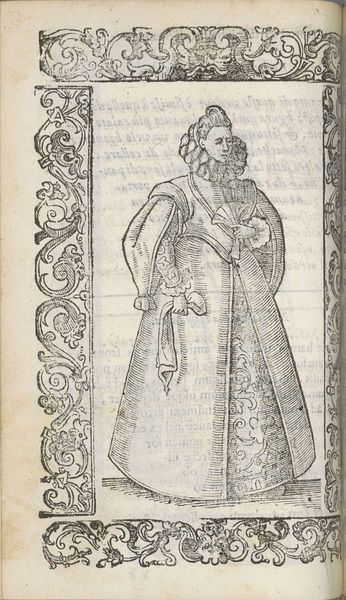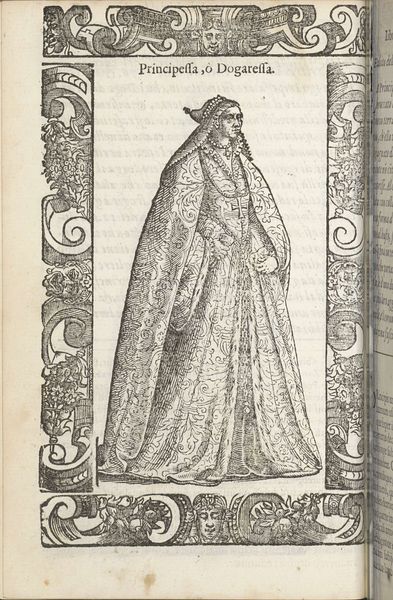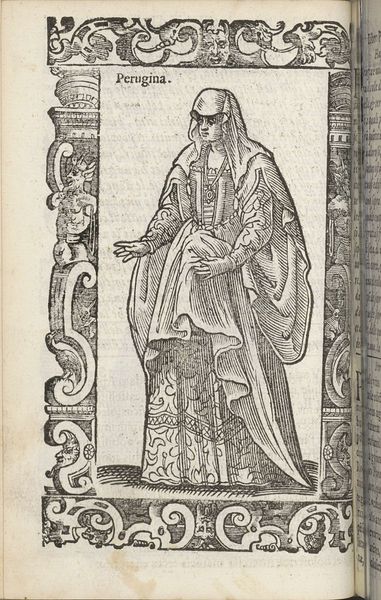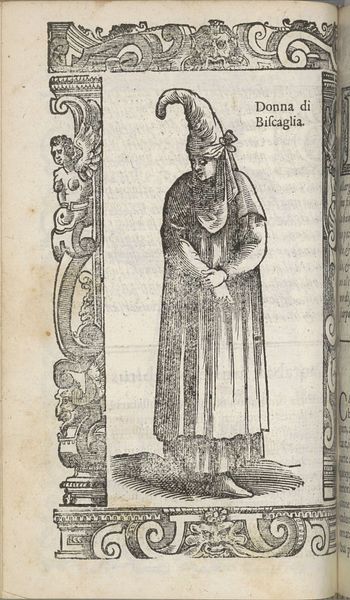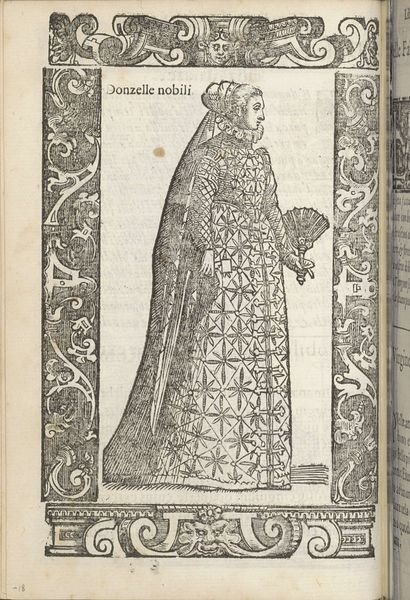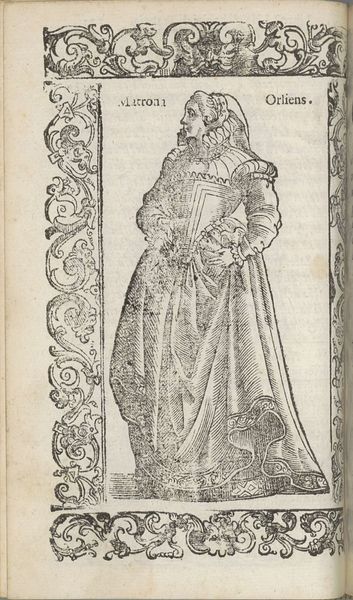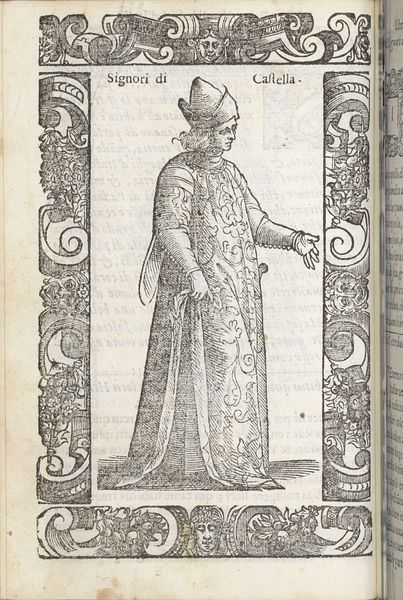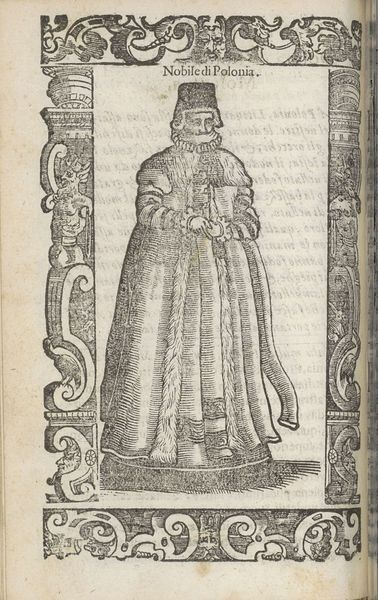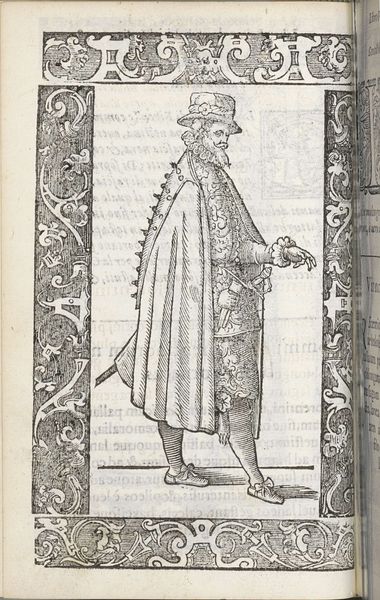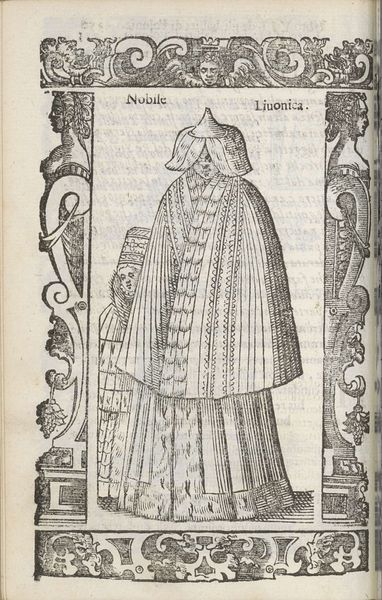
drawing, pen, engraving
#
portrait
#
drawing
#
mannerism
#
pen
#
engraving
Dimensions: height 167 mm, width 125 mm
Copyright: Rijks Museum: Open Domain
Curator: Allow me to introduce Christoph Krieger's "Donna di Gaeta," an engraving from 1598. She’s right here on the page, as if stepped right out of history to greet us. Editor: The immediacy is striking. Even rendered in simple lines, I feel a kind of solemn invitation from this woman. And I have to admit, the ornament, that sort of frame, calls more to my mind than the representation in the center. It all reads very… handmade. Curator: Exactly! This piece, though clearly representational in its intent, embodies the Mannerist style— a period fond of exaggeration and stylistic flourish, if you will. It almost feels like Krieger wanted to prove that a simple pen and engraving could achieve a kind of monumental quality. There's something profoundly beautiful, though simple, here. Editor: For me it's also about where such images were situated and for whom they were intended. As an engraving of this period, how was this "Donna di Gaeta" reproduced and circulated? Was she intended as a visual reference, an aspirational figure, or simply as a display of artisanal skill in printmaking? Were these widely available for a popular market or custom-made, one-off things? Curator: Fascinating questions! Imagine the skill and labor that go into each impression, each pulled print a small act of creation... And you’re so right: the social and cultural context matters. Each print functions almost like a digital file does today; easily copied and distributed widely. But at what cost? Editor: That's the crux, isn’t it? The value shifts from the art object to the labour involved in the processes of production. So many unseen hands probably produced an object that would become the basis for luxury trade. It is no longer a product that can be easily reproduced on an immaterial plane. We have become divorced from the means. Curator: So true. When looking closely at this image again, she now appears as this embodiment, a kind of stand-in figure, from which so many lines of commodity, artistry, and also social life stem. There's a poignant, human presence there amidst the mechanics. Editor: And for me, recognizing all this history woven into the making is just another aspect of viewing it! There is labor, representation, economy, and beauty involved here. What more could one possibly want?
Comments
No comments
Be the first to comment and join the conversation on the ultimate creative platform.
